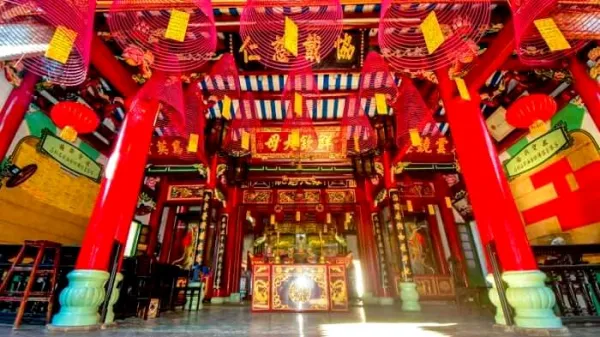Assembly Halls of Hội An - History, Culture, and Trade Port
Dating back to the 15th-19th centuries, the Assembly Halls in Hoi An are exquisite architectural structures, serving as cultural and spiritual hubs for the Chinese, Japanese, and other international merchant communities in Hoi An. Each hall is not just a place of worship and cultural exchange but also a living testament to Hoi An's prosperous past.
Architecture and Significance
Each Assembly Hall in Hoi An is an architectural masterpiece, reflecting the style and cultural identity of its founding community. Decorated elaborately with intricate carvings, distinctive tiled roofs, and spacious courtyards, these halls create an atmosphere of solemnity and peace.
Prominent Assembly Halls in Hoi An
Fujian (Phuc Kien) Assembly Hall : Famous for its unique architecture and serene garden.
Cantonese (Quang Dong) Assembly Hall : Known for its vibrant lion dance festivals.
Chaozhou (Trieu Chau) Assembly Hall : Stands out with its complex and sharp carvings.
Hainan Assembly Hall : An important cultural destination with exquisite woodcarvings.
Cultural and Spiritual Life at the Assembly Halls
The Assembly Halls serve not only as gathering places for the Chinese community but also as centers of cultural and spiritual life. They host various traditional festivals, attracting both local and international visitors.
Preservation and Conservation
The Assembly Halls in Hoi An are carefully preserved to maintain their historical and cultural values. They are not just architectural heritage but also significant historical witnesses.
The Assembly Halls in Arts and Literature
Frequently inspiring art and literature, the Assembly Halls reflect the diverse culture and the rich history of interactions in Hoi An through different eras.
Visiting and Experiencing
Visitors to Hoi An should not miss the opportunity to explore these Assembly Halls, where they can experience tranquility, marvel at unique architecture, and delve into the rich culture of the Chinese communities.
The Assembly Halls of Hoi An are not just attractive tourist destinations but also emblems of the once-thriving port's opulence. They are precious cultural heritage sites that preserve and reflect the distinctive cultural life of Hoi An through the centuries.



